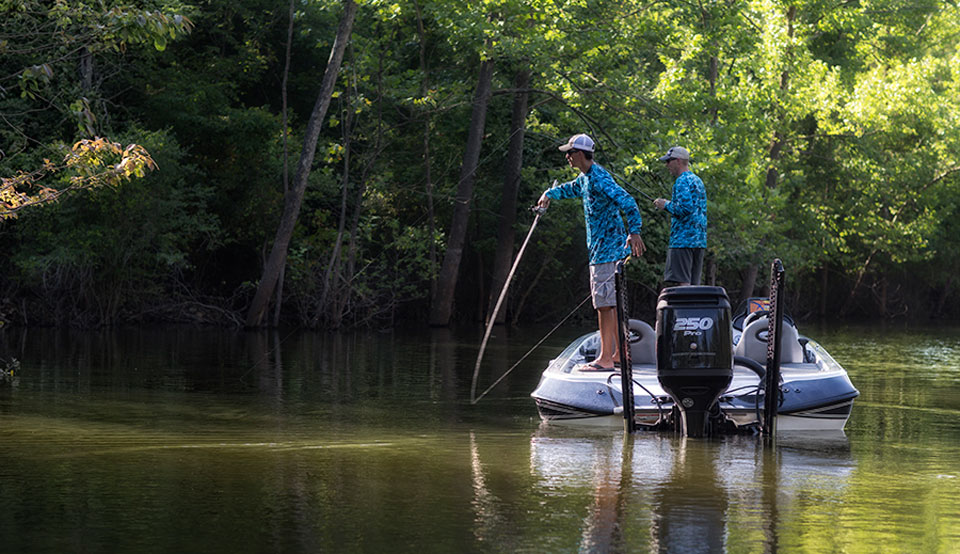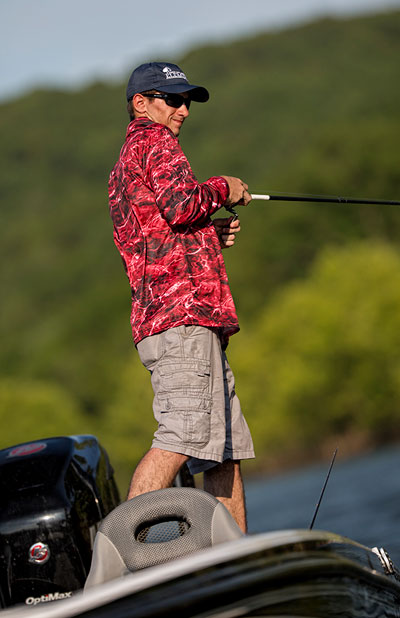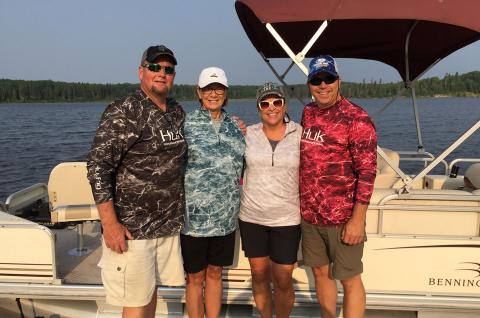
One or two good bites make the difference in winning a tournament. Last year, I seemed to be able to hook and land those good bites. This year, I feel like I’ve missed some of those key bites that could have made a difference in my finishing in the top 12 in tournaments or the top 50. I’ve been right on that top-50 curve.
The last of August and the first of September seem to be the worst times of the year for most bass fishermen to catch bass since the weather is often so hot, especially in the South. But here are some tips I think will help you. Although bass are a warm-water species, they still tend to prefer cooler water at this time of the year. Besides cool water, bass also need well-oxygenated water. The three ways to pinpoint that cooler water are to:
- Locate the water running into a lake or a river, usually in the upper section of the river, and the creeks feeding the upper section of that body of water.
- Find some type of deep cover like deep water with brush piles and rock piles.
- Identify cover like thick vegetation or any type of shoreline cover where the bass can find shade and cooler water.
Upriver Fishing Tactics in Late August and Early September
If I’m fishing the upper portion of the lake, I prefer to fish moving lures like a Storm Arashi Top Walker from Rapala. I like the pearl-white shad or an IU - a greenish back with white sides - color or a bluegill pattern. I’ll fish these lures with 40-pound-test Seaguar line. Next, I’ll tie on a 20-pound-test Seaguar Rippin’ monofilament leader. I’ll cast those top-water lures at a 45-degree angle. Typically the bass will be holding just off the current behind some type of structure - trees in the water, rock piles coming up off the bottom or some other kind of cover that breaks the current. I try to bring the top-water lure right beside that cover, so that it’s right over the top of the bass.
Deep Fishing
 When I’m fishing deep structure, I like a 10” Zoom Ol’ Monster worm in the plum color. I like plum because that’s always has produced bass for me when I’m fishing deep. I’ll Texas-rig a worm with a No. 5/0 VMC extra-wide gap hook. I’ll have a 3/8 or a 1/2-ounce tungsten slip sinker up the line. I’ll fish the worm on 15-pound-test Seaguar InvizX monofilament line. I try and cast pass the cover and then drag the worm into the cover.
When I’m fishing deep structure, I like a 10” Zoom Ol’ Monster worm in the plum color. I like plum because that’s always has produced bass for me when I’m fishing deep. I’ll Texas-rig a worm with a No. 5/0 VMC extra-wide gap hook. I’ll have a 3/8 or a 1/2-ounce tungsten slip sinker up the line. I’ll fish the worm on 15-pound-test Seaguar InvizX monofilament line. I try and cast pass the cover and then drag the worm into the cover.
If the cover I’m fishing is a brush pile, I’ll lift the bait over the limbs and drop it back to the bottom again. I use this tactic when I’m fishing water that’s deeper than 20 feet. I’ve caught bass as deep as 45 feet, using this worm tactic. Many times you won’t feel a bite; the line will just feel heavy as the bass inhales the worm and starts to swim off with it.
Thick Vegetation Fishing
At this time of the year, the vegetation may be submerged or it may top out on the surface. If you can find good, healthy, green vegetation that looks healthy, that vegetation will be producing the most oxygen and the most shade for the bass and the bait fish they’re eating. If I’m going to fish vegetation, I’ll have a rubber frog tied on one rod and another rod rigged for punching through the grass. I’ll often have a 1-1/2-ounce tungsten weight, Texas rigged with a No. 4/0 straight-shank hook. I’ll attach a Zoom Z-Hog lure (creature bait) in the California 420 color or sprayed-grass color.
I’ll search for the thickest part of the grass that makes a canopy for the bass to hold under. This canopy usually will be found where the grass is over the top of the water. I want that weight to land on top of the bass’s head or pass right in front of its nose. When my weight punches through the grass, I free spool my line until the weight hits the bottom. Then I’ll hop the bait off the bottom two or three times before reeling the lure in and then casting to the next thick mat of grass.
If I’m fishing the frog on top of the grass or through spotty grass or lily pads, I like a Terminator Walking Frog. I’ll fish the frog most often when the grass is topped out. I’ll either walk the frog on the top of the thick grass to try and get the bass to blow through the grass and take the frog, or I’ll fish it on the edge of or on the little points of the grass. Ninety percent of the time I’ll be walking the frog much like you walk a Zara Spook.































